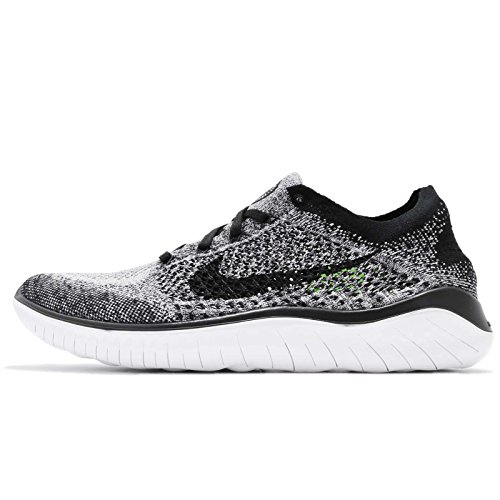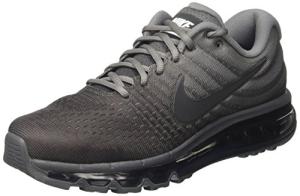Introduction:
Running a half marathon is an exciting challenge that can test our physical and mental strength. With the right preparation and mindset, we can conquer our first half marathon with confidence and ease. From creating a solid training plan to understanding race day strategies, we will explore everything we need to succeed.

As we embark on this journey, we should focus on building our running skills while also taking care of our bodies. Preparation includes selecting the proper gear, optimizing our training, and practicing recovery techniques. Each step will bring us closer to crossing that finish line.
With dedication and the right approach, we can turn our first half marathon into a memorable accomplishment. Let’s dive into the essential tips and strategies that will help us achieve our goal.
Key Takeaways
- Developing a solid training plan is crucial for success.
- Recovery techniques help us stay injury-free and ready to race.
- Mental preparation can boost our confidence on race day.
Embarking on Your Half Marathon Journey
Starting our half marathon journey is exciting and can feel a bit challenging. We need to understand the distance we will run and set realistic goals to make this experience successful. Let’s break this down.
Understanding the Half Marathon Distance
The half marathon is 13.1 miles, which is a significant distance for beginners. It is essential to recognize that this is half the length of a full marathon.
Training for this distance means we must prepare both physically and mentally. Familiarize yourself with the course terrain and weather conditions.
Running different distances during our training helps our bodies adapt. We can follow a structured training plan that gradually increases our mileage. For example:
- Weeks 1-4: Build a base with 10-15 miles per week.
- Weeks 5-8: Increase to 15-25 miles, including longer runs.
- Weeks 9-12: Peak at 30-40 miles leading up to the race.
Setting Realistic Goals
Setting achievable goals helps keep us motivated. For our first half marathon, we may aim to simply finish the race.
Instead of focusing on a specific time, we should prioritize building endurance. We can track our progress using a training log.
Goals can include:
- Running a certain distance without stopping.
- Completing key long runs each week.
- Participating in shorter races leading up to the half marathon.
Having specific targets helps us stay focused. Adjusting these goals based on our progress is also important. This way, we can celebrate our achievements, no matter how small, as we prepare for our first half marathon.
Crafting Your Half Marathon Training Plan

Creating a solid training plan is essential for a successful half marathon. We need to consider the framework, diverse workouts, and the importance of cross training to ensure we build endurance and strength. Here’s how we can approach it.
The Framework of an Effective Training Plan
A well-structured half marathon training plan typically lasts 12-16 weeks. We should gradually increase our mileage to build endurance. A good rule is to follow the 10% rule, which means we should not increase our weekly mileage by more than 10% per week.
Our plan should include:
- Long Runs: Scheduled weekly, gradually increasing distance to simulate race conditions.
- Easy Runs: Short, comfortable runs that promote recovery.
- Tempo Runs: These help us improve our speed and stamina and should be included once a week.
- Rest Days: Allow our bodies to recover.
Incorporating Diverse Running Workouts
To prepare for a half marathon, we must mix different types of runs into our training. This variety keeps our workouts engaging and helps improve our performance.
-
Interval Training: Short bursts of high-intensity effort followed by recovery periods. This builds speed and cardiovascular strength.
-
Fartlek Training: A blend of fast and slow running. This technique can help us improve our pace during the race.
-
Long Runs: These are crucial for building endurance. Start with a comfortable distance and gradually increase.
By scheduling these different workouts, we can target various aspects of our fitness.
Balancing Running with Cross Training
Cross training is vital for our overall fitness and helps reduce the risk of injury. We can incorporate low-impact activities such as cycling, swimming, or strength training into our routine.
Benefits include:
-
Improved Strength: Strength training supports our running muscles and can enhance performance.
-
Injury Prevention: By varying our workouts, we give certain muscles a break while still getting exercise.
-
Cardiovascular Fitness: Activities like cycling and swimming can keep our heart healthy without the high impact of running.
A balanced approach of running and cross training will set us up for half marathon success.
Optimizing Physical Preparedness

To succeed in a half marathon, we need to focus on building strength, improving aerobic fitness, and developing effective pacing strategies. Each of these areas plays a crucial role in our overall performance and helps us conquer the race.
The Role of Strength Training
Strength training is vital for our half marathon preparation. It builds the muscles we use while running, enhancing endurance and reducing the risk of injury.
We should include exercises that target our legs, core, and upper body. Some effective strength exercises are:
- Squats: Boost lower body strength.
- Lunges: Improve balance and coordination.
- Planks: Strengthen the core for stability.
Incorporating two strength training sessions per week into our routine can enhance our running efficiency. This allows us to maintain better form over long distances, ultimately making our runs smoother and more enjoyable.
Importance of Aerobic Fitness
Aerobic fitness is the foundation of our running ability. It allows us to sustain effort over long periods, which is essential for completing a half marathon.
To improve aerobic fitness, we should engage in longer, slower runs. These runs help build endurance and increase our body's ability to utilize oxygen.
Considering a weekly long run is essential. Start with a distance we can manage and gradually increase it each week. A good goal is to reach at least 10 miles before race day. This will help us feel confident and prepared.
Pacing Strategies for Training
Pacing strategies are key to running a successful half marathon. We must learn how to manage our energy throughout the race.
During training, we can experiment with different paces. A common strategy is the 'negative split,' where we run the second half faster than the first. This approach helps us finish strong and avoid exhaustion.
It's also useful to do tempo runs, where we maintain a challenging but manageable pace for a set distance. This helps improve our speed and stamina.
By practicing these pacing strategies, we will know how to adjust our effort on race day, ensuring we can maintain our pace without burning out.
Recovery Strategies for Runners
After completing a half marathon, we need to focus on effective recovery strategies to help our bodies heal and regain strength. Prioritizing rest, incorporating active recovery, and managing soreness are essential for a smooth comeback.
Rest Days and Recovery Runs
We should take rest days seriously. These days allow our muscles to repair and adapt, which is vital after intense training. A good rule is to take one rest day for every mile raced. For us, that means at least 13 days off after a half marathon.
Recovery runs are light, short runs that help maintain our fitness without straining our bodies. These runs can be about 20-30 minutes at a conversational pace. They promote blood flow and help with muscle soreness while allowing us to stay active.
Active Recovery Techniques
Active recovery plays a key role in our post-race regimen. Gentle activities, like walking or cycling, can stimulate blood circulation without excessive strain. This promotes recovery and keeps us moving without pressure on sore muscles.
Restorative yoga is another effective option. It enhances flexibility and relieves tension in our muscles. Spending just 30 minutes doing yoga can significantly aid recovery.
Incorporating a mix of stretching and mobility exercises will also help us maintain range of motion and reduce tightness.
Tackling Muscle Soreness and Injuries
Muscle soreness is common after a race. To reduce soreness, we can use techniques like ice baths, which are known to help lessen inflammation. A cool soak for 10-15 minutes can be effective.
Foam rolling can also aid in smoothing out tight muscles. We can target sore areas for a few minutes, rolling slowly over them.
Resting the affected muscles is crucial if we feel injury pain. Listening to our bodies ensures we don’t push ourselves back too soon. If soreness persists or worsens, consulting a healthcare professional is advisable.
Mental Preparations for Race Day

Preparing our minds is just as crucial as training our bodies when getting ready for a half marathon. A strong mindset will boost our confidence and help us tackle challenges we might face on race day. We can use mental strength techniques and visualization to build this solid foundation.
Building Mental Strength and Discipline
Developing mental strength and discipline is essential to succeeding on race day. This means staying positive and focused, especially when fatigue sets in. We can practice mindfulness techniques like deep breathing, which helps us stay calm and in control.
Setting specific, achievable goals for race day can also guide our focus. For example, we might aim to maintain a steady pace or finish strong. Additionally, we should commit to our training plan. This builds discipline and mental toughness.
We can also keep a journal to track our training progress. Reflecting on our achievements can reinforce our confidence and determination.
Visualization and Mental Rehearsal
Visualization is a powerful tool for preparing mentally. We should take time to picture ourselves running the race successfully. This includes imagining the start line, our pacing, and the finish line.
Creating a detailed mental image can help us feel more prepared. When we visualize, we should also picture overcoming obstacles, like fatigue or distractions. This mental rehearsal prepares us for possible challenges, making them feel less daunting.
We can practice visualization before bed or during our runs. Setting aside a few minutes daily to focus on our goals can boost our confidence significantly. This technique connects our mind and body, helping us perform our best on race day.
Fine-Tuning Your Approach to Training

To conquer our first half marathon, we must refine our training with specific workouts. Focusing on speedwork, interval training, and adapting our long runs will help us build endurance and speed.
Speedwork and Interval Training
Incorporating speedwork into our training is key. This includes short bursts of fast running followed by rest or slower running. For example, we can do:
- 400-meter repeats at a fast pace with a 1-2 minute rest in between.
- 800-meter runs at a challenging pace, allowing for 3-4 minutes of active recovery.
These intervals prepare us for race pace and boost our cardiovascular fitness. As we progress, we can gradually increase the speed and distance of our intervals. This method helps us achieve a negative split, where we run the second half of a race faster than the first, which is a smart strategy for completing our goal.
Adapting Long Runs and Tempo Work
Long runs are essential for building our stamina. These runs should gradually increase in distance each week, reaching about 10-12 miles before race day.
Adding tempo runs to our training is also beneficial. A tempo run is done at a comfortably hard pace, usually just below our race pace. We can start by running for 20-30 minutes at this pace after a warm-up. This teaches our bodies to maintain speed over longer distances.
Combining longer runs with tempo workouts helps us get used to the demands of a half marathon, making race day feel more manageable. Each component enhances our overall performance and readiness.
Before the Starting Line: Final Preparations

As race day approaches, it is important for us to focus on a few key areas. By tapering our training, managing nutrition and hydration, and ensuring our gear is ready, we can set ourselves up for a successful half marathon.
Tapering and Reducing Training Load
Tapering is crucial as it allows our bodies to recover and store energy. We should start reducing our training volume about two weeks before the race.
- First Week: Decrease our weekly mileage by 20-30%.
- Second Week: Cut back another 30-50% to avoid fatigue.
This approach gives our muscles time to heal. It also helps replenish glycogen stores, which are important for our energy during the race.
Additionally, we should do lighter workouts, focusing on shorter runs and maintaining our pace. This way, we’ll stay sharp without exhausting ourselves.
Nutrition and Hydration Strategies
Eating the right foods is key to fueling our race. About a week before the event, we should focus on a carbohydrate-rich diet. Foods like pasta, rice, and bread are great options to fill our glycogen stores.
Staying hydrated is equally important. It’s recommended to drink plenty of water and electrolyte drinks in the week leading up to the race. On race day, we should aim to drink around 16-20 ounces of water in the hours leading up to the start.
We can also consume easily digestible snacks, like bananas or energy gels, 30 minutes before the race. This will help keep our energy levels up without causing digestive issues.
Gear Check and Running Shoes
Before race day, we need to ensure our gear is ready. This includes our running shoes, which should be broken in but not worn out. Ideally, our shoes have been used for shorter runs during training.
We should check our shoes for any signs of wear, as good support is vital. If we notice any damage or discomfort, it may be wise to buy new shoes beforehand.
In addition to our shoes, we need to prepare our race outfit. Select moisture-wicking clothes to stay comfortable. Don’t forget to wear Body Glide to prevent blisters, applying it to areas that rub against our clothes.
Your First Half Marathon Race Day
On race day, we focus on executing our plans, managing the course, and celebrating our achievements. This is a chance to showcase our training and determination.
Executing Your Race Plan
First, we start with a solid race plan. This includes our pacing strategy. A common recommendation is to aim for a pace 10-30 seconds slower than our goal pace for the first few miles. This allows our bodies to warm up and prevents fatigue.
Before the race, we should eat a light breakfast, like oatmeal or a banana. Hydration is key, too. Drinking water or an electrolyte drink before we start helps keep our energy up.
As we run, we should remember to listen to our bodies. If we feel strong, we can adjust our pace slightly. Sticking to our plan helps us finish strong.
Navigating the Course and Aid Stations
Knowing the course is important. We should review the map and understand where the aid stations are located. Most races provide water and sports drinks every 2-3 miles.
When approaching an aid station, we need to stay aware of our surroundings. Look for signage displaying what’s being offered. Grab fluids and thank the volunteers. This small act of kindness can boost our spirits!
If we choose to use energy gels or snacks, it’s best to practice with them during training. This way, we know what works for us on race day. Timing our intake every 30-45 minutes can help maintain our energy levels.
Finishing Strong and Celebrating Your Achievement
As we approach the finish line, we should dig deep and push our pace if possible. Hearing the crowd cheering can be incredibly motivating. Remember our training and the effort we've put in.
Crossing the finish line is a huge achievement. We can take a moment to catch our breath and soak in the experience. It’s important to stay hydrated and refuel after running those 13.1 miles.
Let’s celebrate our success with friends or family who supported us. Sharing our experience helps us appreciate the journey. Every step we took was worth it, and now we have the medal to prove it!
Frequently Asked Questions
Training for a half marathon involves specific strategies and preparation techniques. We can find answers to common questions about training, pacing, nutrition, and what to expect on race day.
What are essential tips for successfully training for a half marathon?
Start with a solid training plan that builds mileage gradually. Include long runs, speed work, and rest days. Staying consistent with our training will help prevent injuries and improve endurance.
How can I set a realistic goal for my first half marathon?
We should assess our current fitness level and choose a goal that is challenging yet achievable. Consider factors like our running experience and the time we can dedicate to training.
What should I expect on race day of my first half marathon?
Race day will bring nerves and excitement. Arrive early to get settled, know the course, and stay hydrated. We can expect a mix of emotions and the joy of crossing the finish line after all our hard work.
What strategies can help me maintain my pace during a half marathon?
Using a pacing strategy is key. We can take advantage of mile markers to check our speed and adjust as needed. It's helpful to start at a comfortable pace and avoid the temptation to sprint early on.
How important is nutrition in preparing for a half marathon?
Nutrition plays a vital role in our training. We need to fuel our bodies with the right balance of carbohydrates, proteins, and fats. Staying hydrated and practicing our race-day nutrition during training can greatly impact our performance.
What are common mistakes to avoid when running my first half marathon?
Common pitfalls include starting too fast and neglecting hydration. Also, undertraining or overtraining can lead to poor performance or injury. Listening to our body is essential for a successful race day.







